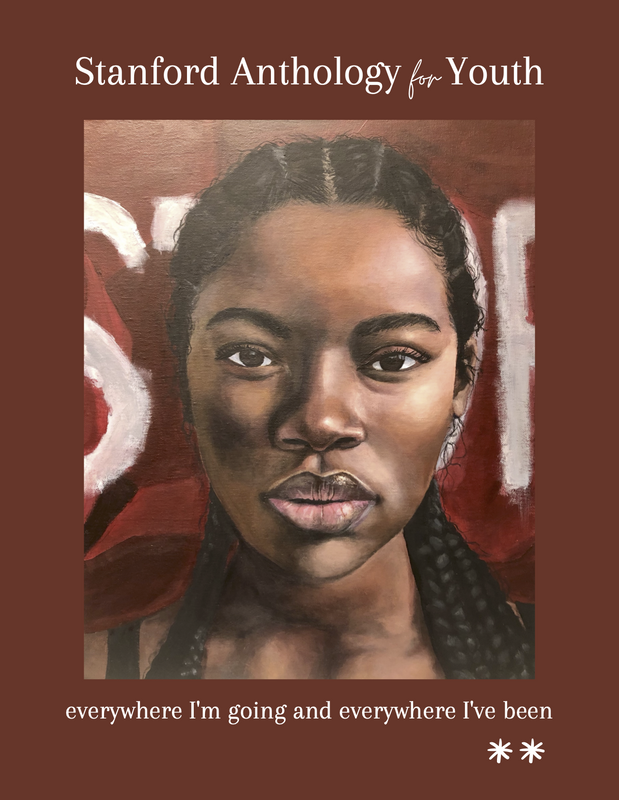Consider a published anthology filled with 258 pages of polished prose, poetry, art and photography, carefully curated by an editorial board for nine months. Surely one might think that, considering the quality along with the amount of editorial effort, this collection contains the work of veteran authors and artists. Instead, the Stanford Anthology for Youth (SAY) celebrates the talent of a different demographic: middle school students living in the Bay Area.
Since 1997, Stanford students participating in the SAY have selected, reviewed and put together annual literary and artistic collections of work by young Bay Area students. For many of these students, the anthology serves as one of the first opportunities to get their work published.
“I think the Stanford Anthology for Youth is a really nice way for middle school kids to gain exposure to the writing industry and publications, but in a way that’s pretty low pressure,” Danielle Amir-Lobel ’24, a member of the editorial board, said. She explained that, although SAY has a robust review process and high standards, a lot of the work they receive is of high quality.
“I think that it’s really nice for them to see their writing published, and I just hope that it encourages them to continue being writers and gain confidence in themselves,” she added.
The team’s latest anthology was released in July, highlighting the work of 64 middle school contributors. Though the pandemic made it impossible for the anthology to be physically printed this year, the SAY team made the best of an otherwise limiting situation by removing their usual page restraints.
President of the editorial board Riley Jackson ’21, M.S. ’22 said this edition contains more pieces of art than ever before — 103 to be exact — while incorporating a larger variety of artists. “And there are … also some longer pieces of poetry that take up multiple, multiple pages that I think really give students a chance to develop a much deeper story that we typically haven’t been able to showcase,” Jackson added.
But it isn’t just the increase in variety and length that makes the 2021 edition of the SAY unique. Jackson said that the SAY board “really wanted to do something different and special … a way to highlight stories that either dealt with the pandemic directly or dealt with other situations of difficulty.” This focus culminated in the SAY’s first-ever themed edition: resilience.
“I think writing about resilience, especially from middle school students, shows a lot of maturity,” Amir-Lobel said. “And it is really inspiring because a lot of older people found it difficult to move on and carry on. I think when you see middle school students talking about resilience and how they kept going, it kind of offers a perspective into, maybe, ‘if they can do it, I can do it, too.’”
It is also clear that the SAY — especially this year’s edition — is just as beneficial to older readers as it is to young contributors. “I am astounded by the quality of the writing in all the submissions that we got,” Sheila Cochrane ‘21, a member of the editorial board, said. She explained that middle school submissions are unique in that most students are encountering life experiences for the first time. “I think it’s good to go back as an older reader and appreciate those perspectives,” she added.
Matt Liao ’22, a member of the editorial board, wrote in an email that younger writers tend to be less jaded or clouded, and more inspiring. “It is incredibly refreshing to read,” he wrote, adding that older readers can use the anthology to view the world from a fresh perspective, and “one that they may not have considered in many years.”
Additionally, each piece in the anthology comes with a short biography about the student contributor, helping readers appreciate the wide range of voices.
To create this valuable and inspiring experience for readers and writers alike, the editorial board puts an immense amount of effort into the SAY’s review process. “We read each [piece] with extreme care,” Cochrane said. “And when I say extreme care, I mean we care about each of the writers who come through and each piece, and we feel proud of them and their writing.”
The combination of talent and effort by the middle school contributors and the editorial board shines through each edition of the SAY.
“It’s so encouraging to see that, even with all of the obstacles and … the chaos of the past year and a half, to know that these young writers still stuck to their craft and continued to write, continued to put their emotions and their energy into these projects,” Jada Hallman ’23, a member of the editorial board, said.
